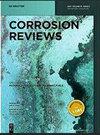用于保护船用钢结构的人工阳极材料:综述
IF 2.7
4区 材料科学
Q3 ELECTROCHEMISTRY
引用次数: 0
摘要
海洋结构经常受到海水的腐蚀,因此有效的防腐蚀保护对其寿命和性能至关重要。牺牲阳极通常由锌、铝或镁合金制成,通过牺牲自身来保护钢结构,从而减轻腐蚀。然而,牺牲阳极材料的选择和使用带来了各种挑战,亟待解决。本文探讨了与钢结构牺牲阳极材料相关的挑战,并提供了潜在的解决方案。为了克服这些挑战,本文提出了一些解决方案,如使用先进的合金成分、保护涂层、混合阳极系统以及改进设计考虑因素。此外,还强调了监测技术对评估牺牲阳极性能和剩余寿命的重要性。文中讨论了几个案例研究和实验结果,以说明基于锌合金、铝合金和镁合金的牺牲阳极材料的有效性和局限性。论文强调了持续研发工作的必要性,以满足海洋环境中不断变化的腐蚀防护需求。本文章由计算机程序翻译,如有差异,请以英文原文为准。
Sacrificial anode materials to protect marine grade steel structures: a review
Marine structures are constantly exposed to the corrosive effects of seawater, making effective corrosion protection crucial for their longevity and performance. Sacrificial anodes, commonly made of zinc, aluminum, or magnesium alloys, are widely employed to mitigate corrosion by sacrificing themselves to protect the steel structures. However, the selection and implementation of sacrificial anode materials present various challenges that need to be addressed. This paper explores the challenges associated with sacrificial anode materials for steel structures and provides potential solutions. To overcome these challenges, the paper proposes solutions such as using advanced alloy compositions, protective coatings, hybrid anode systems, and improved design considerations. Furthermore, the importance of monitoring techniques to assess the performance and remaining lifespan of sacrificial anodes is emphasized. Several case studies and experimental findings are discussed to illustrate the effectiveness and limitations of sacrificial anode materials based on zinc alloys, aluminum alloys, and magnesium alloys. The paper highlights the need for ongoing research and development efforts to address the evolving demands of corrosion protection in marine environments.
求助全文
通过发布文献求助,成功后即可免费获取论文全文。
去求助
来源期刊

Corrosion Reviews
工程技术-材料科学:膜
CiteScore
5.20
自引率
3.10%
发文量
44
审稿时长
4.5 months
期刊介绍:
Corrosion Reviews is an international bimonthly journal devoted to critical reviews and, to a lesser extent, outstanding original articles that are key to advancing the understanding and application of corrosion science and engineering in the service of society. Papers may be of a theoretical, experimental or practical nature, provided that they make a significant contribution to knowledge in the field.
 求助内容:
求助内容: 应助结果提醒方式:
应助结果提醒方式:


